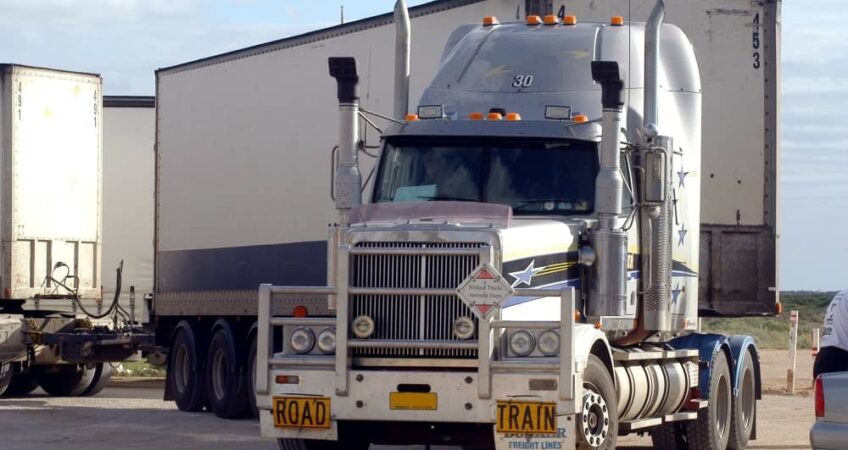
Logistics costs are one of the major expenses for a business, but you don’t have to accept them as unavoidable. Reduce logistic costs and maximise efficiency to keep your business running effectively and profitably.
Businesses face unending pressures from different directions, including rising fuel and equipment costs. It is crucial to monitor your business operations and actively seek new ways of reducing logistic costs. At Australia Wide Haulage, we commit to ensuring your logistic costs reduce significantly by employing various strategies.
1. Embrace Automation and AI Technology in Your Logistics
Automation is one of the most cost-effective ways to streamline logistics operations. Automating order fulfilment, warehouse management, inventory tracking, and delivery schedules reduces labour costs. Artificial intelligence (AI) and machine learning (ML) technology can optimise your logistics operations.
Companies can use AI algorithms to analyse large amounts of data to identify hidden trends and patterns. With this data-driven approach, companies can make more informed decisions about their operations, such as optimising inventory levels and adjusting delivery routes. Use AI systems to schedule deliveries efficiently and accurately without overspending on logistics.
Another way businesses use AI in the logistics sector is through automated robots for transportation and storage. Program robotic systems to move goods in the physical movement process and control stock levels. This reduces the need for manual labour and allows companies to reduce costs while increasing efficiency.
2. Rely on Different Transportation Methods
Cut logistic costs by utilising different modes of transport for your business. For example, using road freight may be more cost-effective than air freight for some businesses. If you’re shipping items that are not time-sensitive, then road transport can save huge costs. Additionally, opting for sea freight for bulky or oversized items can be a great way to reduce costs, as sea freight is often heavily discounted.
Your business should adopt transport mode flexibility and avoid using costlier shipping options. Expedite shipment for goods that your customer needs sooner instead of the entire shipment. Use other less expensive modes of transport to ship the remaining part of the consignment. Rail transport is less costly than trucking, and combining both could favour your business. Consider intermodal transportation instead of relying on a single mode of transport.
3. Consider Shipping Consolidation Options
Shipping consolidation combines multiple orders into one shipment, allowing companies to reduce costs. Conduct shipping consolidation through a third-party vendor or work directly with suppliers. Consolidating shipments reduces postage fees, inventory costs, and fuel surcharges. It also eliminates the need for multiple packaging and handling, reducing waste costs. Furthermore, consolidation helps to ensure that the goods arrive on time and in good condition.
The key to success with shipping consolidation has a well-structured plan. Start by assessing your current supply chain system and determining what drives your costs and how you could optimise them. Identify areas where multiple orders can be consolidated into one shipment and investigate the benefits of doing so.
4. Centralising Procurement
Centralising procurement is essential for any business looking to reduce its logistic costs. Businesses gain a better understanding of their supply chain and allocate resources efficiently. Do this through centralising orders from multiple vendors into one location, streamlining the ordering process, and negotiating better prices for bulk orders. Businesses can also benefit from a more efficient and streamlined distribution system by consolidating deliveries from multiple vendors into one shipment. This will reduce the number of trips taken throughout the supply chain and help to reduce the overall costs associated with it. By centralising procurement, businesses can take advantage of economies of scale and drive down their logistic costs.
5. Improve the Visibility of Your Supply Chain
Improving supply chain visibility is key to reducing logistic costs for your business. It means getting a closer look at the inventory and other areas, such as risk management, customer service, and finance. By increasing visibility into the supply chain, organisations will be better positioned to anticipate and respond to changing market dynamics faster. Supply chain visibility helps organisations to strengthen collaboration, reducing costs and ensuring supplier performance is consistently monitored. This aids in keeping an eye on potential disruptions to operations due to these parties far earlier than before. Ultimately, supply chain visibility offers forward-looking benefits to organisations looking to enhance end-to-end process performance while fixing problems that may have otherwise gone unnoticed.

Factors Affecting Logistic Costs
Logistic costs are some of the most important components that affect a business’s bottom line. Logistics costs vary drastically depending on the type of goods being moved, the mode of transportation and any associated services. Logistics cost is affected by both external and internal factors.
External Factors
External factors that affect logistics costs include fuel prices, labour costs, taxes, tariffs, and other surcharges. The fuel cost is the most volatile of all external factors since it is subject to wide fluctuations depending on supply and demand. Costs associated with labour also vary depending on the duration, location, and type of job required. Taxes, tariffs and other surcharges can also lead to increased logistic costs.
Deregulation
Deregulation is when the government reduces or removes restrictions and regulations on businesses and industries. This significantly affects logistics costs. It lowers business costs by removing red tape and eliminating unnecessary bureaucracy.
Consumer Behaviour
Consumer behaviour is a key factor that affects logistics costs as it drives the demand for goods and services. An increase in consumer demand for a particular product can increase the cost of shipping and handling goods associated with that product. This can lead to increased costs for the business due to increased transportation, packaging, and handling associated with order fulfilment.
Growing Power of Retailers
The growing power of retailers is driving up the costs of logistics services. Companies are demanding more efficient delivery times and cost-effective solutions. This has led to an increased focus on supplier selection and negotiation, automated systems for inventory control, improved customer service protocols and a greater emphasis on efficiency and productivity. As retailers increasingly turn to third-party logistics services to reduce their overall operational costs, they are also looking to reduce their supply chain’s direct and indirect costs. They are looking closely at selecting better logistics service providers or negotiating more favourable deals with existing providers.
Internal Factors
Internal factors that affect logistics costs include company size, the type of goods being shipped and the scope of services required for delivery. Larger companies have a greater ability to negotiate lower rates with carriers due to their larger volumes of shipments. The type of goods shipped can also affect when dealing with perishables or hazardous substances, as additional fees or restrictions may apply. The scope of services required for delivery also affects logistics costs, as more complex tasks require additional personnel or specialised equipment, which add to the overall cost.
Type of Goods
Large and bulky items like heavy machinery may require special handling procedures, which can significantly increase costs compared to smaller items. Hazardous materials must be shipped in compliance with strict government regulations, resulting in increased safety protocols and higher costs. Food products often require special temperature controls to maintain quality and safety during transport, adding additional cost to the logistics process.
Contact Us at Australia Wide Haulage
Logistics costs can be a major expense for any business, particularly those with significant supply chain operations. Reducing these costs can often be the difference between success and failure. Australia Wide Haulage is here to help you reduce logistics costs and maximise the efficiency of your business. Our experienced team of logistics professionals can provide you with the best possible solutions to reduce your logistic costs.
We pride ourselves on our customer service and will always strive to provide you with the most cost-effective solutions for your business. If you would like to learn more about our services or have any questions regarding logistics, please do not hesitate to contact us.
